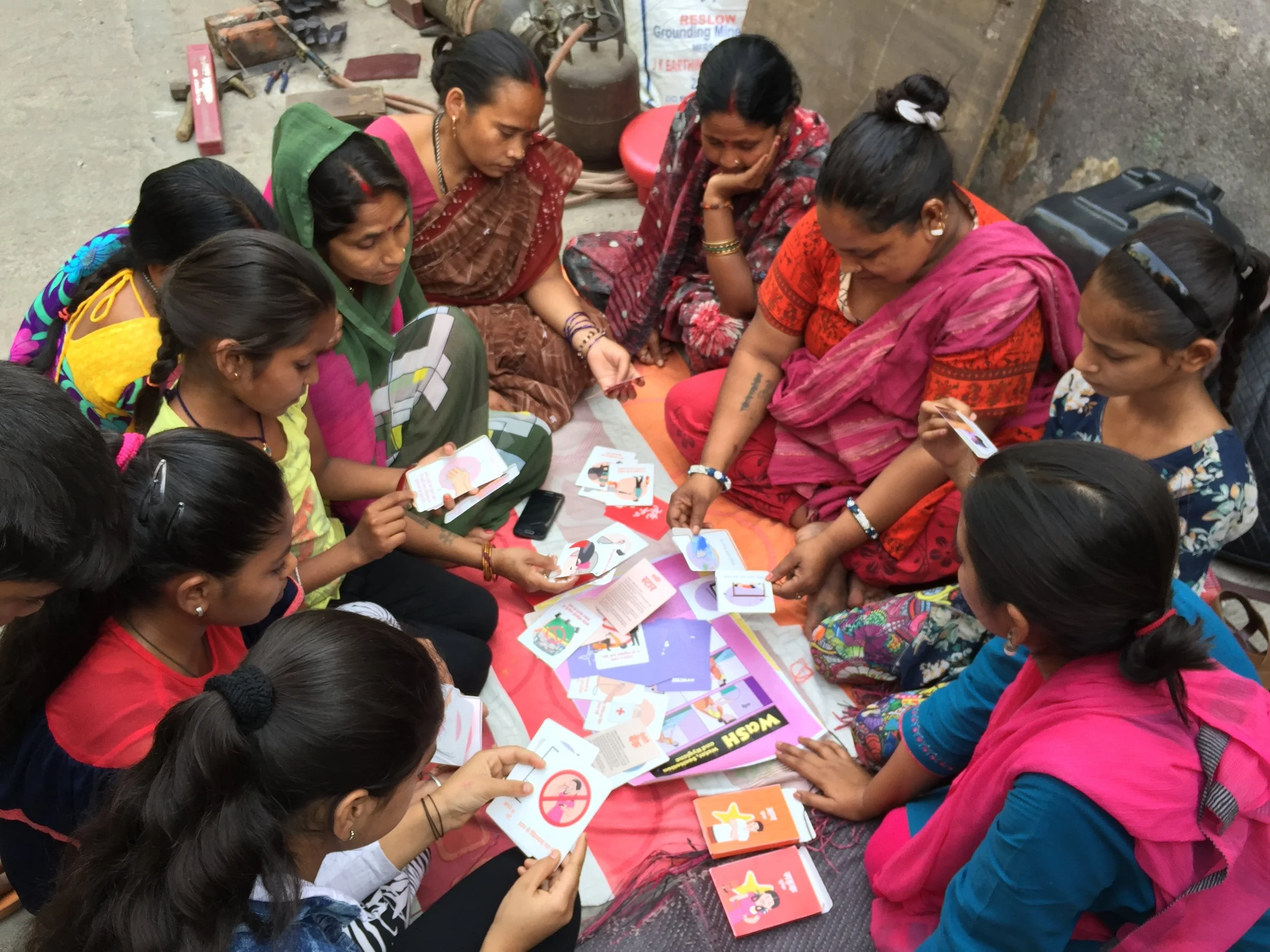SEEDS Safe Schools Program*
Overview
SEEDS provides disaster preparedness and safety training for school children throughout India and sought research and design support to improve its training curriculum for primary and secondary students attending public schools in Delhi, India.
3D rendering of the prototypes of the Safe Schools Program games and collateral.
(Photo credit: Quicksand Design Studio)
Role
Kevin was the design lead, and utilized a human-centered approach to improve existing, and develop new, collaterals in order to transform students and training recipients from passive consumer of safety messaging to active change agents within their communities. The team developed a campaign and branding to align all training collaterals and related activities, which was bolstered through the development of a cast of characters, each tagged to a specific safety concern, effectively making them avatars of their safety issue. The Safe Schools toolkit includes two board games, six car decks, two activity books, posters, and more.
Skills & Activities
User Experience Research and Design
Project Management
Prototyping & Testing
Immersive Field Research
Graphic Design
Workshop Facilitation
Rich Media Documentation
Embedded field testing with students and parents in Delhi, India to evaluate gameplay experience and prototype aesthetics.
(Photo credit: Quicksand Design Studio)
* - Project done while Kevin was employed with Quicksand Design Studio.
Phase-wise Project Process Map
-
The initial phase of the project involved developing a keen understanding of the client's needs and the safety-related issues impacting students in Delhi's public schools through interviews and focus group discussions with the SEEDS project team. This was complemented by secondary research into school safety trends (e.g., existing and emerging risks) as well as analogous programs seeking to meaningfully respond to these challenges.
-
Primary research was conducted at several public schools throughout the city, as well as at students' homes and surrounding communities. This included interviewing school administrators, staff, teachers, students, and members of the students' families. Representatives of these stakeholder groups also shared insights during focus group discussions and workshops in order to provide a deeper understanding of the risks at hand and the impact that they have on the broader school ecosystem. Research also included rich media documentation of schools and school frounds, communities neighboring schools, and students' homes in order to document risks and challenges for further ideation.
-
Learnings from the primary and secondary research activities were translated into design principles that were presented to the client team for review and approval. Following which, these principles informed the development of a robust system of fun educational games and activities featuring a cast of characters whose personas map to particularly pressing safety concerns (e.g., fire, earthquakes, floods) identified by the communities. This tagging of risks to characters increased recall and helped students better understand and relate to challenge through the use of stories featuring the characters. The emergent school safety kit includes board games, activity books, and cards.
-
The project team re-engaged with the communities and its members that were part of the initial research phase to evaluate low fidelity prototypes of the school safety kit. These activities were documented via photography and videography and allowed the research team to identify opportunities for improving various components of the kit while also ensuring that the students and their families felt represented and accounted for throughout the design process. Learnings from these testing activities helped improve the overall quality of the school safety kit, including adopting user-generated content within it that allows for continued evolution of the training system moving forward.
-
The final school safety kit was adopted by the organization and is currently being used to support safety training activities in 50 government schools in East Delhi, reaching an estimated 100,000 students.



